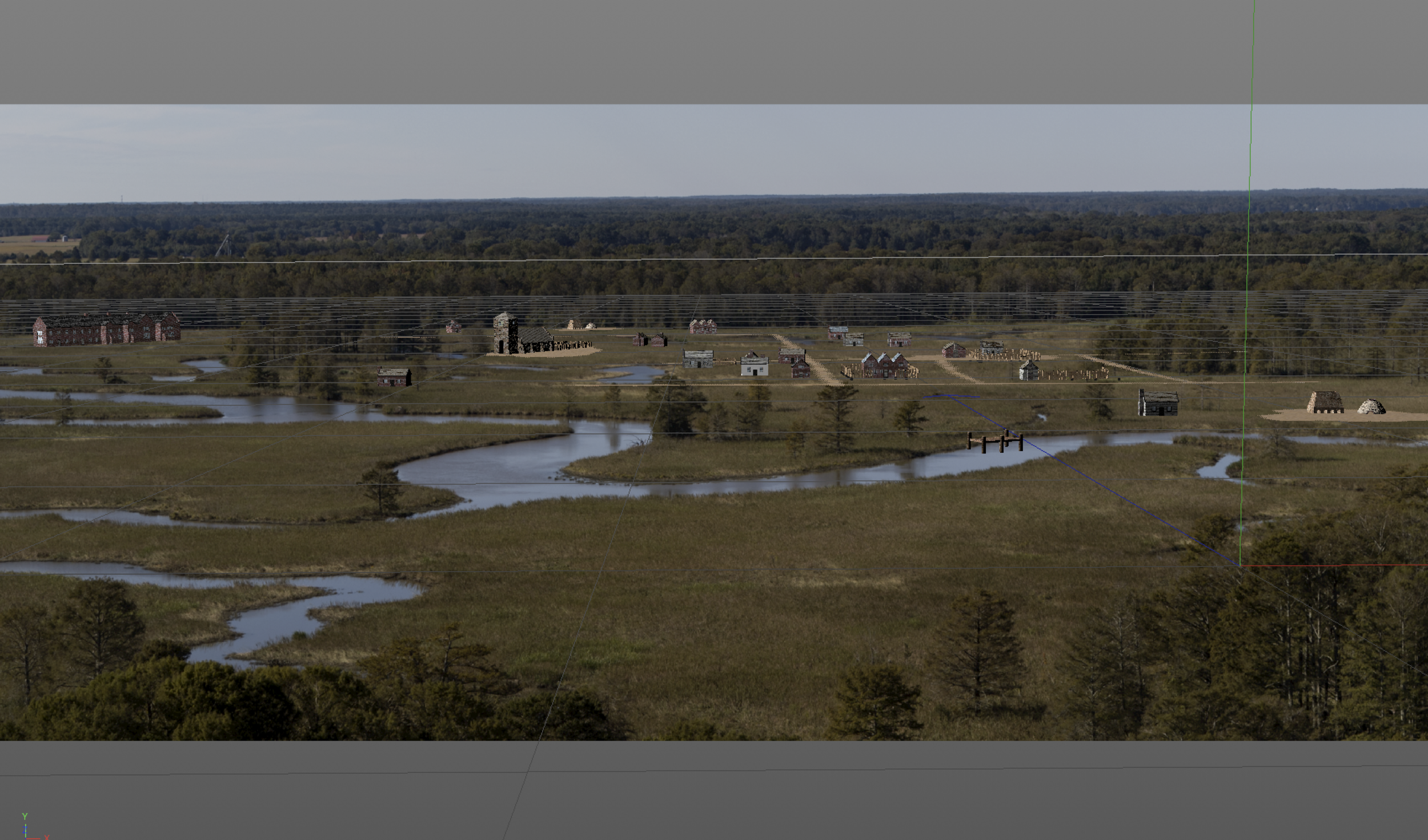A Digital and Physical Practice
Who am I? What do I do? How do I do what I do?
These are all valuable questions that I, as an artist, am always trying answer. My answers fluctuate as technology and I evolve. If you ask someone in my family what I do, they may say things such as, “she’s an animator,” or “she does graphic design, I think.” You may also get, “she made the so-and-so exhibit in that museum.” The confusion is valid because my practice takes on many different forms and spaces. My work includes things such as animation, graphic design, game design, 3D modeling, and more.
At a young age, I knew I would pursue some kind of artistic career. Having a strong love for cartoons, animation seemed like the way to go. Once I started college, I found myself wanting to expand outside of animation and into areas such as 3D modeling and film. I began labeling myself as a 3D generalist or 3D artist in pursuit of jobs to keep my work more broad. I knew I wanted to explore mediums outside of just animation.
When I began my professional career as a 3D/VFX artist, I put on hold some of my artistic passions such as sculpting. This medium became more of a hobby rather than part of my professional practice because I didn’t think I would need any physical objects outside of the digital. 3D work remained in my computer and I strictly would create around the parameters of a screen. As time went on, I began to think outside of the computer and into a physical space. This changed how I was working. There were many more things to consider now; scale and perception was now at play in relation to the viewer.
My work began taking form on 140 ft long screens, holographic projections, and on elevator walls that made you feel like you were flying through the world. I needed to think of ways to better immerse the viewer and how to marry digital with the physical world. I often mock up the physical space in 3D software such as Cinema 4D to get a better sense of what different viewers may experience. I’ll place cameras in multiple spots to get various view points. I’ve incorporated new tools such as the Unreal Game Engine to simulate the interactions within a space. I sculpt my digital models in zBrush and texture them using Substance Painter.
I’ve been working as a professional 3D/VFX artist for over 5 years now, and my practice continues to evolve. My career has always felt separate from my personal work as an artist. Labelling myself as standalone professional artist still feels foreign to me. The word “professional” feels commercialized or that I’m searching for some sort of validation. I’m proud of the work I’ve done alongside a team, but I look forward to creating more JC pieces. Even more so, I look forward to pass on what I’ve learned and experienced to my students at East Tennessee State University in my role as Assistant Professor in Digital Media.
Hologram of Sharks
The company I work for, Cortina Productions, recently did the media for the new shark exhibit at the Georgia Aquarium. We worked on creating a story-driven animation to play on a new technology called Hypervsn. It essentially uses LEDs on a wall of fans to create a 3D-esque hologram visual. The wall of fans is placed in the main area of the aquarium and above the entrance to the new exhibit. I was working on creating a complex animation of sharks swimming on and off, bumping the screen, and then swallowing you whole, but I wasn’t getting the results I had hoped for.
I had to learn the limits of this new technology in order to get a successful visual. Once I saw it in person, I realized I was going about this the wrong way. This technology is great for eye-catching product advertisements, and my product was sharks. I reworked my animation to show the swim cycles and bite of the different sharks and really tried to push how they moved in 3D space. I also had to add particles, in this case, bubbles, to create depth.
The story animation I had originally created would have been great for an LED wall, but it didn’t work for the LED fans. It needed to be more abstract. The Hypervsn technology is a great attention grabber that also gives you a futuristic feel.
Rebuilding Jamestown in 1670
I really enjoyed this project because it involved creating something that has very little reference. My team and I built Jamestown in the 1670s based on a drawing that an archeologist made after excavating the location. The town is used in a opening shot for a 4D film in a museum for Jamestown. My coworker got some drone footage of an grassy area along a field and that is where we decided to build our town. I used what little reference there was to model the statehouse building (show in images below) and a few other small houses. We also used paintings as reference for the architecture such as row houses and what kind of roofs to put on buildings.
After picking out our shot from the drone footage, I took it in Cinema 4D and used the 3D camera tracker. It took a few times of trial and error to get a solid point cloud since it is such a wide shot and the tree line kept getting lost in the plane. We used the archeologist’s drawing to place each building as well as rough in some roads. My coworker and I split the modeling and texturing.
My contribution : 3D Camera motion tracking, modeling, texturing
Programs used : Cinema 4D, After Effects, Photoshop









